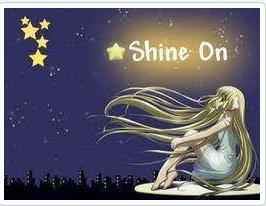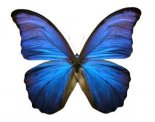“The Golden Hour. In photography, the “golden hour” is the first and last hour of sunlight of the day. Photographers venture out on sunrise hikes or sunset treks to capture a magical shot, due to the quality of the light during that time of day. Last week, I spent several days exploring Quebec City, and the view of the Old Town, from the city’s historic ramparts, is stunning. I took the photo above on our first day of wandering, as the sun began to set.” – Cheri Lucas Rowlands
“The first and last hour of sunlight of the day.” Hmm.. what about if I go a little farther beyond and venture to take shots at, say, about 8 o’clock in the evening using only a point and shoot camera. Will I still come out with a “golden” result?
Here’s what I got but let me explain first why I think this is a golden shot.
At 8 o’clock in the evening it’s completely dark in the Philippines. My usual experience when taking shots at this time of the day gives me a clear picture of the subject, at least, but more often with just empty darkness at the background. This is usually the case especially when using a point and shoot camera. But look at the background here. It’s not only visible but amazingly clear and natural. The sky looks clear and natural as if taken on a normal day when the sun is partly hidden behind some nimbus clouds.
I have to ask a professional photographer to understand the dynamics behind this shot which I call “an accidental masterpiece”. Here’s what my friend said about all of it:
“In the case of cameras which can be set to “manual mode” it’s easy to achieve what you want with your subject and its environment or the whole frame itself. You just have to put the ISO, Shutter Speed and Aperture into the right setting.”
“For example, if you want to take a clear photo of your subject and its environment, a low ISO number like 200 means it’s less sensitive to light whereas a higher number like 1600 means it’s more sensitive to light. This means that the higher the ISO setting the brighter the subject and its environment.”
“Now, the common maximum shutter speeds are in the 1/200th of a second to 1/250th of a second. Basically this is the maximum speed that your camera and flash work together i.e. any faster than this and your camera’s shutter is opening and closing too quickly to allow all the light from your flash to fill the camera’s sensor. Now although we could quite easily make the scene completely black by going to an incredibly high shutter speed like 1/8000th second the problem with this is that the shutter will open and close so quickly that none of the light from the flash will hit the sensor, so we must stick to the maximum sync speed that our cameras and flashes work together.”
“The final setting on our cameras is the aperture or basically what ‘f’ number we should select. Now, knowing roughly what ‘f’ number to use will become second nature after you’ve done this a few times so the best thing is to choose say, f/5.6 and go from there. If you go higher, say f/8.0, then you are making your camera insensitive to whatever light is there from the environment thus making your background just plain and empty color of black or darkness.”
“What you’ve got in your photo is what ‘point and shoot’ cameras would achieved with their fixed settings at that particular time of the night.”
Wow! Indeed, not all that glitters are gold. Not all golden shots are colored yellow, orange or bits and pieces of the sun’s light.The golden hour is not always at the first and last light of the sun at daytime.
For the first time since I had become part of ‘post-a-week’ weekly photo challenges, I had a rebellious interpretation. And I loved to be different this time.
Do you agree that I got an “accidental masterpiece” here? LOL.






























thank you for teaching me the technical part of the camera. I can always use more learning tools
LikeLike
You are welcome, Terry. I have to learn to use my newly acquired DSLR camera to take full advantage of its features which, to me, makes it more exciting to handle than the so-called ‘point and shoot’ cameras’ (with fixed settings).
DSLR is a common term which means digital single lens reflex camera. DSLR cameras have been around for quite a time and are hugely popular among amateur and professional photographers alike.
One of the great things about DSLR cameras is that the lens is changeable enabling the photographer to create a variety of different looking shots in one camera from wide angle shots to telephoto shots.
LikeLike
I believe I would really like to own one. Are they very expensive Maxim?
LikeLike
Not really. At least in the Philippines you can have one (with all the features of a DSLR) from $500 up. I believe it costs much less there in the U.S. The top-of-the-line DSLR camera here can go from $2,000 up (accessories not included).
LikeLike
” Indeed, not all that glitters are gold. Not all golden shots are colored yellow, orange or bits and pieces of the sun’s light.The golden hour is not always at the first and last light of the sun at daytime.” So true!
LikeLike
Thank you Naomi. An affirmation is so pleasant to hear. And thank you too for this visit.
LikeLike